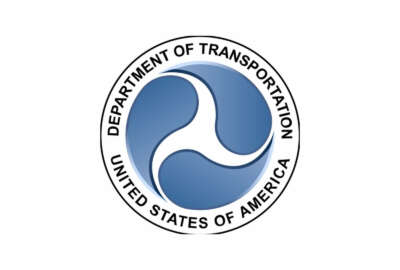

The nation’s transportation system must handle 70 million more people in the coming years.
Transportation is a vital piece of the economy, one that every American relies on daily in one way or another. Beyond Traffic is an overall look at the nation’s transportation system over the next three decades. It’s not an action plan; it’s a wake-up call.
“We look at what the trends are of the demands on the system, look at the trends of the condition of the system and then paint a picture of what things could look like in 30 years if we don’t take pretty dramatic action,” undersecretary of Transportation for Policy Peter Rogoff said in an interview for Agency of the Month. “And it’s a pretty dismal picture, frankly, in terms of what our transportation system will not be delivering for us as a people and as an economy 30 years from now.”
One of the Transportation Secretary Anthony Foxx’s responsibilities is to report periodically to the nation on the condition of its transportation system. Foxx sought council from a number of former secretaries including William Coleman who published a similar study in 1977 entitled “National Transportation: Trends and Choices (to the year 2000.)”
“It really was a forward looking piece without any policy prescriptions, but he really wanted –as we debate where we’re going with our surface transportation infrastructure and where we are going with aviation—he really thought that we needed to have an organic look at where the nation is heading in the next 30 years in terms of what we will need from the transportation system,” said Rogoff. “As well as how well our current system is or is not going to suit our needs for the next 30 years.”
The report is divided into sections to look at individual challenges said Rogoff. “How we move people. How we move things. How we are going to deal with technological innovation; and does technology hold the promise to make things easier or harder going forward.”
DoT addresses trends in each of the individual modes of transportation and in combination with the those relating to conditions like demographic changes, the aging of the population and how that changes demand on the transportation system.
One example Rogoff pointed to is the driving patterns of young people. Today fewer people are opting to get a driver’s license when they come of age.
“The biggest trend that stares us in the face is population growth, specifically that we’re going to have about 70-million more people as a nation,” said Rogoff. “And much of that population growth is going to happen in the very same megaregions that have already experienced significant population growth in the last decade. So, we are going to have places that are already behind in dealing with their congestion problem becoming that much more congested that much more quickly.”
But those megaregions aren’t the only areas that need attention.
“We simultaneously have infrastructure that is serving millions of people in the northeast and the Midwest that is aging at a rapid clip that really needs replacement,” said Rogoff. “We’re sort of running out of duct tape to hold it all together and we need to actually tackle the need to not just patch those bridges but replace them, and we will have—even in states that may be losing population—we’re going to have considerable stresses on the transportation system as a result.”
As the department works on the final report, Rogoff said they’re also taking a close look at what the growing degree of income inequality in the nation means for the transportation system.
He said transportation actually contributes in some ways to income inequality and divides people in terms of those who have easy access to jobs, to goods and services versus those whose transportation system is not adequate and who are isolated from all of those things.
“When we talk about trying to develop solutions for transportation it’s not one size fits all. There’s a growing trend in the country which is the reverse of what we were seeing in the 1960s and the 1970s when Secretary Coleman wrote his report,” said Rogoff. “The population is getting increasingly urban, whereas folks with resources used to move from the inner city to the suburbs, folks with resources are now moving into the city.”
Although ‘Beyond Traffic’ paints a stark picture, Rogoff said the report isn’t about pushing agendas or practicing politics.
“We did not include our policy proposals as an administration in the report,” said Rogoff “And the report wasn’t written to buttress the administration’s policy goals. It was really intended to be a dispassionate look at the future based on the trends as we see them, and we had a lot of input from a lot of outside stakeholders from all ends of the political spectrum.”
Copyright © 2025 Federal News Network. All rights reserved. This website is not intended for users located within the European Economic Area.
Lauren Larson is Federal Drive producer and broadcast operations manager at Federal News Network. Follow @llarsonWFED
Follow @llarsonWFED

